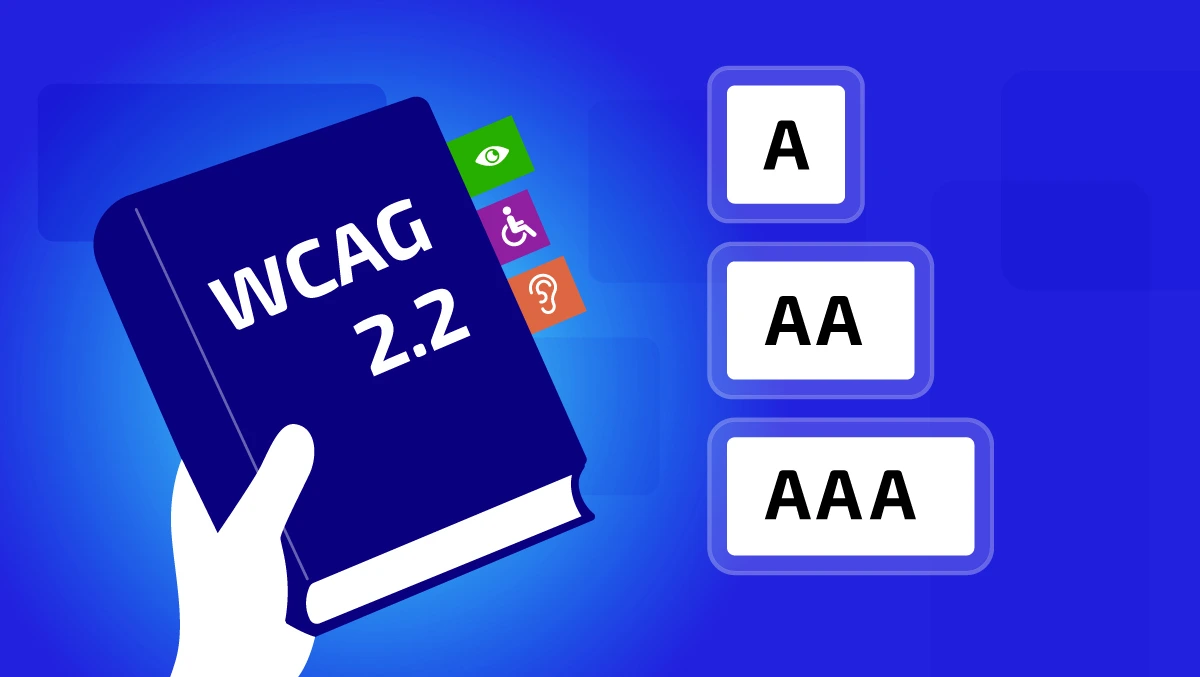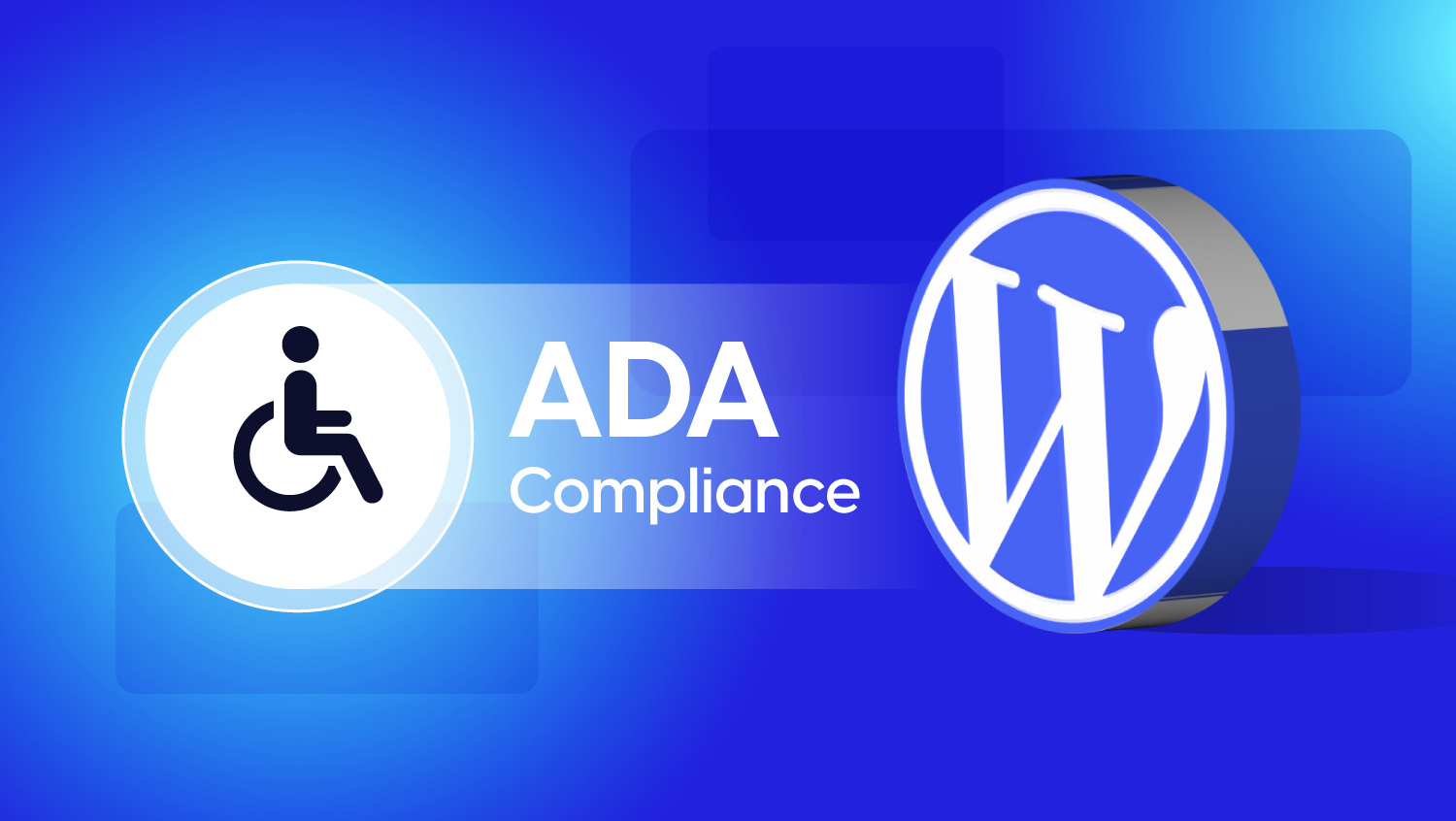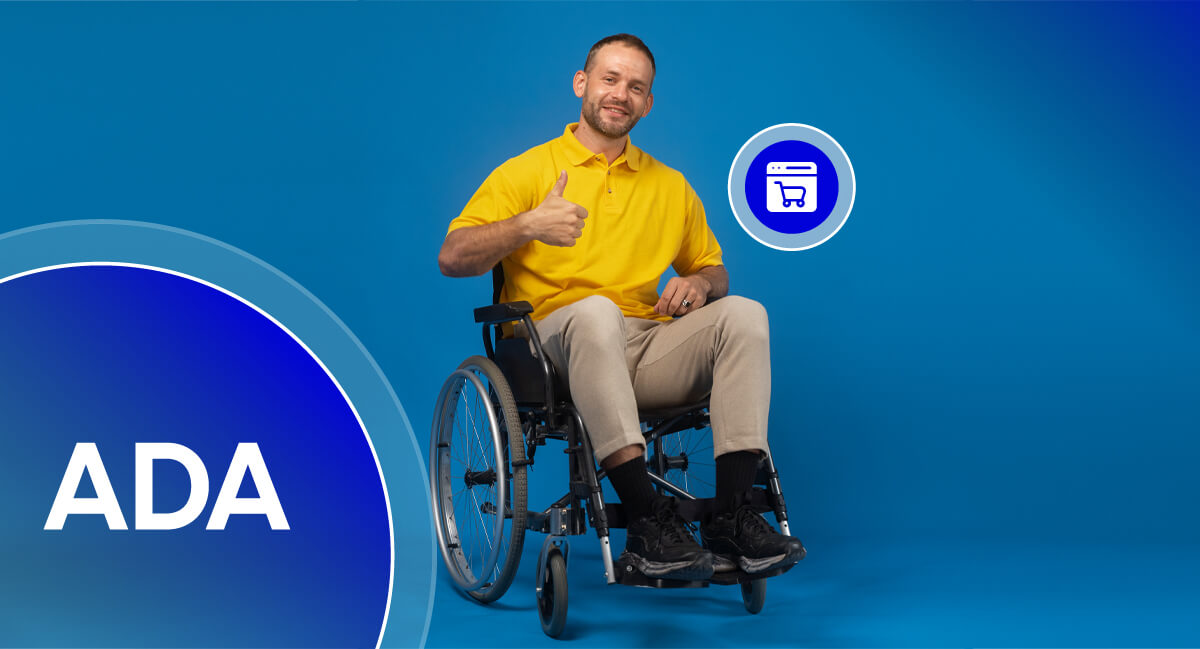ADA Compliance for Videos: The Ultimate Guide for 2025

In 2025, video is no longer just a content trend, it’s the primary form of communication online, driving brand engagement, education, ecommerce, and customer support. According to Invisia, video traffic is projected to make up over 82% of all internet traffic, surpassing text and static visuals as the go-to content format for users.
But here’s the catch: as video grows, so does the legal obligation to make it accessible.
Under U.S. law, namely the Americans with Disabilities Act (ADA) and Section 508 of the Rehabilitation Act, videos must be made accessible to individuals who are deaf, hard of hearing, blind, or have low vision. Globally, similar regulations exist under the Web Content Accessibility Guidelines (WCAG) 2.2, the European Accessibility Act, and EN 301 549 (the EU standard adopted by Germany under BITV 2.0 and BFSG).
Failing to meet these standards is risky. In 2023 alone:
- 4,605 ADA-related digital accessibility lawsuits were filed in the U.S., many involving missing video captions or inaccessible media players
Source: Digitala11y - 71% of users with disabilities leave a site that is not accessible
Source: Wonderful.io. - Over $6 million in damages and settlements were paid by brands due to inaccessible video content
Source: Lainey Feingold, Accessibility Lawyer
But it’s not just about lawsuits.
SEO Advantage: Google indexes video transcripts and captions, boosting rankings
Wider Audience Reach: Captions improve engagement across platforms like YouTube, LinkedIn, and Instagram
Better User Experience: 80% of users who use captions aren’t even deaf, they simply prefer viewing with sound off.
Accessible video content = inclusive brand + stronger performance.
In this guide, you'll learn:
- What counts as ADA-compliant video content in 2025
- What the latest WCAG and legal frameworks require
- Tools and techniques to caption, describe, and test your video accessibility
- How solutions like Accesstive can help make this easy and code-free
Let’s make video work for everyone, and stay compliant while doing it.
What is ADA Compliance for Videos?
ADA compliance for videos means making your video content accessible to everyone, including people with disabilities. It’s not just good UX, it’s the law.
In 2025, the Americans with Disabilities Act (ADA), especially Title III, requires private businesses offering public services to ensure equal access to digital content, including videos. That applies whether you're running an ecommerce site, SaaS product, university portal, or public service platform.
So what exactly does video accessibility mean?
Video Accessibility Covers:
- Closed captions for deaf or hard-of-hearing users
- Audio descriptions for blind or low-vision users
- Keyboard navigation for users with motor impairments
- Screen reader compatibility for users relying on assistive tech
Learn how to optimize design for accessibility
Why It’s a Legal & Business Must-Have
According to the U.S. Department of Justice (DOJ), video content falls under the scope of ADA’s "effective communication" requirement. Failure to comply can result in:
- Fines and legal penalties (Example: Netflix settled for $755K in a 2012 captioning lawsuit)
- Lawsuits from individuals or advocacy groups
- Reputation damage and SEO penalties
Real Data:
- Over 4,500 digital accessibility lawsuits were filed in 2023 alone (Source: aeldata).
- More than 98% of websites fail to meet basic accessibility standards (Source: WebAIM Million).
Want to avoid this? Start with a no-hassle scan using Access Audit. It detects compliance gaps in your video content, no code required.
ADA compliance for videos isn’t just about captions, it’s about ensuring your video content is usable by all. That means structure, labels, captions, and compatibility, all tied to real-world legal expectations and inclusive design best practices.
Why Video Accessibility Matters in 2025
In the evolving digital landscape, video accessibility is no longer optional, it’s a legal, UX, and SEO necessity. As ADA enforcement tightens and user expectations rise, businesses, educators, and creators must adapt, or face serious consequences.
Legal Risks Are Rising: Don't Be the Next Headline
Digital accessibility lawsuits are surging, especially around video content that lacks proper captioning or navigation support.
- In 2023, over 1,200 lawsuits in the U.S. directly targeted non-captioned or inaccessible video content (Source: Accessibility.com).
- The ADA Title III requires businesses to provide “effective communication,” and videos without captions or descriptive audio violate that mandate.
If your video library isn’t accessible, you're at risk for:
- Fines and settlements (often ranging between $5,000–$50,000+)
- Lawsuits from advocacy groups and individuals
- Negative PR that damages brand trust and customer loyalty
Run a Free Accessibility Audit to find if your videos meet the latest ADA and WCAG standards, no dev skills needed.
Expanded Guidelines & Stricter Enforcement in 2025
In 2025, the Department of Justice (DOJ) and international equivalents are cracking down. They're aligning video compliance with WCAG 2.2, which includes a wider range of media requirements.
Here’s what video accessibility means under the updated regulations:
- Accurate, real-time closed captions (not auto-generated junk)
- Transcripts and audio descriptions for full context
- Keyboard operability, allowing all users to play, pause, and navigate without a mouse
- Assistive tech compatibility, including screen readers and alternative input devices
These aren’t just suggestions, they’re legal expectations. For EU and German organizations, this also intersects with BITV 2.0, EN 301 549, and the BFSG.
Want to learn more about legal overlap? Read our post on ADA vs WCAG
Inclusive Design = Better Engagement (and ROI)
Accessible video isn’t just a legal checkbox, it’s a UX win and SEO booster.
- 85% of videos on Facebook are watched without sound (Source: Digiday), making captions useful even for fully abled users.
- Captions improve comprehension, memory retention, and watch time, especially on eLearning, marketing, or onboarding content.
- Audio descriptions help neurodivergent users follow content more clearly, which boosts total engagement and reduces bounce rates.
Also, Google indexes transcripts and captions, giving accessible video a serious SEO edge. Structured content improves keyword visibility, time-on-site, and content discoverability.
Need help making your videos usable for assistive tools? Try Accessibility widget for guided, no-code fixes.
Make sure every video you publish in 2025 follows these updated accessibility requirements. These standards are based on WCAG 2.2, ADA Title III, and global compliance laws like the European Accessibility Act (EAA) and BFSG in Germany.
| Accessibility Requirement | What It Means |
| Closed Captions | Provide accurate, real-time captions for all dialogue, sound cues, and speaker IDs. Avoid relying on auto-captions. |
| Audio Descriptions | Include spoken narration describing on-screen actions and visuals for blind or low-vision users. |
| Transcript Availability | Offer full-text versions of the video content for users who prefer to read instead of watch. |
| Keyboard Navigation | Ensure all video player controls (play, pause, volume, etc.) can be accessed via keyboard only. |
| Screen Reader Compatibility | Design your player and controls so that screen readers like NVDA or VoiceOver can accurately interpret them. |
| Color Contrast | Maintain a high contrast ratio (minimum 4.5:1) for controls, overlays, and subtitles for readability. |
| Autoplay Controls | If autoplay is used, provide clear, accessible options to stop or pause the video to avoid sensory overload. |
| Flexible Timing | Allow users to pause, rewind, and resume content easily, especially those with cognitive, motor, or attention impairments. |
Pro Tip:
Start thinking about accessibility at the scriptwriting and storyboard phase, don’t tack it on after production. This saves time and ensures better UX from the ground up.
ADA Video Captioning Requirements (2025)
Captions are a core component of accessible video content. Under the Americans with Disabilities Act (ADA), video captioning is required to ensure equal access for people with hearing disabilities. In 2025, compliance standards have evolved to align closely with WCAG 2.2 and international laws such as the European Accessibility Act (EAA).
Below are the key ADA-compliant captioning requirements your team must follow:
1. Accuracy and Sync Timing
Captions must reflect 100% of the spoken content, no summaries or paraphrased lines.
They must be precisely synchronized with the speaker’s voice, ensuring real-time readability. Mismatched or delayed captions fail compliance checks and create confusion for users.
2. Speaker Identification
When more than one person is speaking, captions should clearly identify the speaker.
Example:
[John]: Let’s start the meeting.
This is critical in dialogue-heavy content, interviews, or webinars.
3. Sound Descriptions
Non-speech audio should be described in brackets to provide full context. This includes:
- [laughter]
- [door slams]
- [background music fades]
Such cues help users understand the tone, setting, and mood of the content, especially when visuals are not accessible.
4. Caption Format
Always use closed captions (CC), not open captions.
Closed captions give users the ability to toggle captions on or off based on their preference. This flexibility is essential for accessibility and aligns with WCAG success criterion 1.2.2.
For content management teams, this means ensuring your video players support CC toggling and are tested across browsers and assistive technologies.
5. Language Localization
Captions must be provided in the primary language of the audience your content serves.
For multilingual websites, offer alternative caption tracks or downloadable transcripts in relevant languages. This approach ensures accessibility across borders and supports compliance with both U.S. and EU accessibility regulations.
Pro Tip: Captioning supports more than accessibility, it improves your video SEO, increases retention for mobile users, and boosts engagement in silent viewing environments (e.g., social media feeds).
How to Make Your Videos ADA Compliant (2025 Guide)
Ensuring your videos meet ADA standards isn’t just about ticking boxes, it’s about making content accessible, inclusive, and legally safe. Here's a step-by-step breakdown of how to make your video content ADA compliant in 2025.
1. Choose an Accessible Video Player
Not all video players are built for accessibility. To meet ADA and WCAG 2.2 requirements, your player must support keyboard navigation, screen readers, and closed captions. Recommended options include:
- AblePlayer – An open-source player built specifically for accessibility.
- YouTube – Widely used and supports captions and transcripts (when properly set up).
- Vimeo – Offers keyboard navigation, subtitle toggling, and color contrast customization.
Make sure you enable and test these accessibility features within your platform’s player.
2. Add Captions and Audio Descriptions
Captions are required under the ADA, while audio descriptions help blind or low-vision users understand visual elements. Use trusted captioning tools and services to maintain accuracy:
- 3Play Media – Offers WCAG-compliant captions and live captioning services.
- Rev.com – Quick turnaround with human-generated caption files.
- Descript – Useful for transcription and audio description editing.
Check your videos for missing captions, timing issues, and unlabeled audio cues, especially if your content is embedded across multiple platforms.
3. Audit Your Videos Using WCAG 2.2
Use the Web Content Accessibility Guidelines (WCAG) 2.2 AA as your framework to evaluate:
- Closed captioning accuracy and sync
- Player interface accessibility
- Color contrast and visual cues
- Audio description availability
Run an automated accessibility audit with a tool like the Access Audit to identify violations on your site and prioritize fixes.
4. Test with Real Assistive Technologies
Always test your video experience using the tools your users rely on. These include:
- Screen Readers – Use NVDA (Windows) or JAWS to test navigation and transcript compatibility.
- Keyboard-Only Browsing – Ensure all player functions (play, pause, volume, fullscreen) can be controlled without a mouse.
- Color Contrast Analyzers – Use tools like WebAIM’s Contrast Checker to validate contrast ratios on player buttons and overlays.
Real‑World Example: Harvard University Captioning Lawsuit
What Happened
In 2015, the National Association of the Deaf (NAD) filed a class-action lawsuit against Harvard University, alleging that thousands of publicly available online course videos lacked accurate captions. The complaint claimed this violated Title III of the Americans with Disabilities Act (ADA) and Section 504 of the Rehabilitation Act.
The content included lectures, guest talks, and publicly streamed media hosted on Harvard’s YouTube, iTunes U, and other platforms.
Source: National Association of the Deaf v. Harvard University, Civil Action No. 3:15-cv-30023-MGM, U.S. District Court of Massachusetts. 2015. National Association of the Deaf
Court Ruling & Settlement
After 4+ years of litigation, Harvard agreed to a consent decree in November 2019:
- All newly published videos must include accurate, synced closed captions
- Legacy content must be captioned within 5 business days if requested
- Captioning must follow WCAG 2.0 Level AA standards
- The university must report accessibility improvements regularly for 5 years
Source: "Harvard Settles Lawsuit Over Lack of Video Captions." The Harvard Crimson, Dec. 2, 2019.
Why This Case Matters
- It set a national precedent that ADA Title III applies to online content, even from nonprofit educational institutions.
- Harvard’s argument that they weren’t responsible for third-party platforms (like YouTube) was rejected.
- The case clarified that auto-generated captions (e.g., YouTube auto-captioning) are not compliant unless they meet strict accuracy standards.
Key Lessons for 2025
| Takeaway | Impact |
| Captions are legally required | Under ADA, WCAG, and Section 504 |
| Auto-captions don’t cut it | Manual review or professional services (like Rev or 3Play Media) are needed |
| Public websites ≠ exempt | Even universities must treat online content as public-facing accommodations |
| Ongoing policy is necessary | One-time fixes won’t ensure future compliance |
Common Video Accessibility Mistakes to Avoid
Even well-meaning organizations often fall short on ADA video compliance due to common but avoidable errors. Here’s what to watch out for:
1. Relying on Auto-Generated Captions Without Human Review
Platforms like YouTube or Vimeo offer auto-captioning, but they frequently miss words, punctuation, speaker changes, and tone, making them unreliable for full ADA or WCAG 2.2 compliance.
Always review and correct captions manually or use trusted services like Rev or 3Play Media.
2. Ignoring Non-Speech Audio Content
Sounds like [laughter], [applause], [door slams], or [music playing] offer vital context. Omitting them excludes deaf or hard-of-hearing users from full comprehension.
Add meaningful sound descriptions alongside dialogue in captions.
3. Using Inaccessible Video Players
Some custom or outdated players lack keyboard controls, fail screen reader checks, or offer poor contrast.
Use accessible players like AblePlayer, Accessible HTML5 Video, or YouTube with proper configuration.
4. Skipping Audio Descriptions
If your video includes visual-only scenes (like text overlays, charts, or actions without speech), then audio descriptions are a must for blind or low-vision users.
Add separate audio tracks or a described version of the video to explain essential visuals.
5. Uploading Without Transcripts
Transcripts offer a searchable, screen-reader-friendly alternative and support those who prefer reading or who use translation tools.
Include a downloadable or inline text version of all spoken content and descriptions.
ADA Video Compliance: Who’s Responsible
ADA video compliance isn’t a one-person job. It’s a collaborative effort involving marketing, content, tech, and legal teams. Below is a breakdown of each role with real-world tasks and examples
1. Content Creator / Scriptwriter
Responsibility:
Set the tone for accessibility at the pre-production stage. If the script is confusing or visually dependent, the video becomes hard to caption or describe later.
What They Should Do:
- Write clear, plain-language dialogue
- Describe all onscreen visuals in narration
- Avoid using text-only visuals without explanation
Example:
If you're producing a product demo video, mention what’s being shown on screen:
Instead of just: “And this is the dashboard.”
Say: “This is the dashboard where users can track orders, view analytics, and manage inventory.”
2. Video Editor / Post-Production Team
Responsibility:
Ensure the video includes all necessary accessibility enhancements:
Captions, visual clarity, descriptive audio, etc.
What They Should Do:
- Add accurate closed captions for all speech and sounds
- Create optional audio descriptions (especially for visual-only segments)
- Check color contrast of text overlays
- Insert transcripts where required
Example:
For an educational video on digital marketing trends, the editor includes captions like:
“[Background music fades]”
“Host: The top SEO trend in 2025 is semantic search.”
And an audio description track like:
“Text on screen: ‘Voice Search Now 70% of Queries – Source: Statista 2025’”
3. Web Developer
Responsibility:
Implement video content in a way that’s fully accessible on the front end, no matter the device or disability.
What They Should Do:
- Use accessible players like AblePlayer or YouTube with correct embed settings
- Ensure keyboard operability (pause/play using tab + enter)
- Make sure video controls are labeled for screen readers
- Add proper semantic HTML (e.g. <figure>, <track>, <video>) and ARIA attributes where needed
Example:
Embedding a video on a university site using HTML5 with:
html
<video controls aria-label="Lecture on Modern Typography" tabindex="0"> <source src="lecture.mp4" type="video/mp4"> <track kind="captions" src="lecture-captions.vtt" srclang="en" label="English"> </video>
4. Legal or Compliance Team
Responsibility:
Ensure the final output adheres to ADA Title III, Section 504, and WCAG 2.2 AA standards. Avoid legal risk by reviewing content before launch.
What They Should Do:
- Stay updated on federal accessibility laws (e.g., recent DOJ rulings)
- Check that captioning and audio descriptions meet legal standards
- Review third-party vendors or content platforms for compliance
Example:
Before launching a new LMS platform, the legal team audits all tutorial videos using a tool like Accesstive’s Access Monitor, then signs off only if all compliance boxes are ticked.
5. Accessibility or QA Tester
Responsibility:
Run real-world tests to ensure the video can be accessed by users with screen readers, keyboard-only input, and other assistive tech.
What They Should Do:
- Test videos using tools like NVDA (Windows), VoiceOver (Mac/iOS), and TalkBack (Android)
- Check playback and captions using keyboard-only navigation
- Use tools like WebAIM Contrast Checker for color contrast
Example:
An accessibility tester finds that the play button on a video isn’t reachable via keyboard. They report this to the dev team to fix with better HTML structure and tabindex.
Pro Tip: Start accessible video planning early, don’t treat captions or descriptions as “add-ons.” Bake them into your process at the script, design, and editing stage.
Final Thoughts: Inclusive Video is the Future
Video continues to be one of the most powerful tools for engagement, but only when it’s accessible to everyone. As we move through 2025, ADA-compliant video content is no longer a “nice to have.” It’s essential.
Accessibility isn’t just about ticking boxes. It’s about building equitable, user-first digital experiences that reflect your brand’s values, boost engagement, and meet legal requirements.
Whether you're publishing video tutorials, marketing reels, or educational content, making your media inclusive ensures everyone, regardless of ability, can watch, listen, and participate.
If you're unsure where to begin, take a step with Accesstive's Access Service.
Let’s make the web a place where everyone belongs, one accessible video at a time.
FAQs About Video Accessibility (2025)
Yes. Videos published on websites, learning platforms, or apps must be accessible to people with disabilities under laws like the Americans with Disabilities Act (ADA) and Section 508 in the U.S., and BFSG or BITV 2.0 in Germany.
This includes adding closed captions, audio descriptions, transcripts, and ensuring keyboard accessibility of the video player. Accessible videos not only avoid legal risks, they improve UX for everyone.
The ADA doesn’t outline video rules directly but enforces them through WCAG 2.2 AA standards, which require:
- Accurate, synchronized captions
- Audio descriptions for visual content
- Keyboard navigation
- Screen reader compatibility
- Transcripts
A video is considered ADA-compliant if it:
- Has accurate, synced captions
- Provides audio descriptions for visual elements
- Is navigable with a keyboard
- Is compatible with screen readers
- Offers transcripts
Avoids autoplay without user control
All these must meet WCAG 2.2 AA guidelines, now a de facto global standard for digital accessibility.
Yes. Under ADA Title III, private businesses that serve the public must provide equal access to digital content, including videos.
Courts have ruled that websites are considered “places of public accommodation,” making them subject to ADA enforcement. Non-compliance can lead to fines, settlements, and reputational damage.
To make your YouTube videos accessible:
- Upload accurate closed captions (not just auto-generated)
- Include visual descriptions in the audio or description box
- Add a video transcript in the description or via linked document
- Avoid flashing visuals without warnings
Use clear speaker labeling for multi-person videos
Also embed the video on your site using an accessible player if needed.
Add closed captions, audio descriptions, and transcripts. Use a keyboard-friendly, screen-reader-compatible video player and ensure proper color contrast.
In the U.S., the ADA and Section 508 require accessible digital content. In the EU and Germany, the EAA, BITV 2.0, and BFSG apply.
Use APA style: Creator. (Year, Month Day). Title [Video]. YouTube. URL. Example: Accesstive. (2024, Dec 20). How to Make a Website ADA Compliant [Video]. YouTube.




